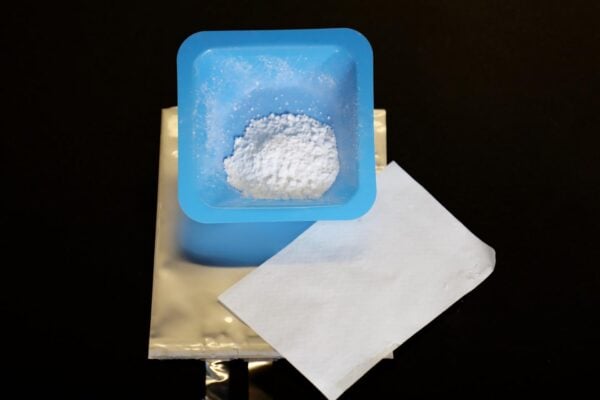
Silica additive protects lithium batteries from accidents
“In a lithium-ion battery, a thin piece of plastic separates the two electrodes,” said Dr Gabriel Veith, principal investigator at ORNL. “If the battery is damaged and the plastic layer fails, the electrodes can come into contact and cause the battery’s liquid electrolyte to catch fire.”
To make these batteries safer, some researchers instead use a nonflammable, solid electrolyte. But these solid-state batteries require significant retooling of the current production process, says Veith. An alternative is to use a silica additive in the electrolyte to create an impact-resistant electrolyte. It solidifies when hit, preventing the electrodes from touching if the battery is damaged during a fall or crash. If the electrodes don’t touch each other, the battery doesn’t catch fire. This approach would require only minor adjustments to the conventional battery manufacturing process.
He used a thixotropic material for children, consisting of cornstarch and water. “If you put the mixture on a cookie tray, it flows like a liquid until you start poking it, and then it becomes a solid,” said Veith. After the pressure is removed, the substance liquefies again, and this reversible “shear thickening” behaviour can be used to make batteries safer.
The thixotropic characteristic depends on a colloid, which is a suspension of tiny, solid particles in a liquid. For the battery colloid, Veith and his colleagues at Oak Ridge and the University of Rochester used silica suspended in common liquid electrolytes for lithium-ion batteries. On impact, the silica particles clump together and block the flow of fluids and ions. The researchers used perfectly spherical, 200nm diameter particles of silica. “If you have that very uniform particle size, the particles disperse homogeneously in the electrolyte, and it works wonderfully,” said Veith. “If they’re not homogenously sized, then the liquid becomes less viscous on impact, and that’s bad.”
One of Veith’s major advances involves the production process for the batteries. During manufacture of traditional lithium-ion batteries, an electrolyte is squirted into the battery case at the end of the production process, and then the battery is sealed. “You can’t do that with a shear-thickening electrolyte because the minute you try to inject it, it solidifies,” he says. The researchers solved this by putting the silica in place before adding the electrolyte. They are seeking a patent on their technique.
In the future, Veith plans to enhance the system so the part of the battery that’s damaged in a crash would remain solid, while the rest of the battery would go on working. The team is initially aiming for applications such as drone batteries, but they would eventually like to enter the automotive market. They also plan to make a bigger version of the battery, which would be capable of stopping a bullet. That could benefit soldiers, who often carry 20 pounds of body armour and 20 pounds of batteries when they’re on a mission, says Veith. “The battery would function as their armour, and that would lighten the average soldier by about 20 pounds.”
Related stories:
- CERAMIC SUBSTRATE STABILIZES LITHIUM BATTERIES
- NEW MATERIALS TARGET FAST CHARGING BATTERIES
- BATTERY CAN FAST CHARGE AT LOW TEMPERATURES
 If you enjoyed this article, you will like the following ones: don't miss them by subscribing to :
eeNews on Google News
If you enjoyed this article, you will like the following ones: don't miss them by subscribing to :
eeNews on Google News



